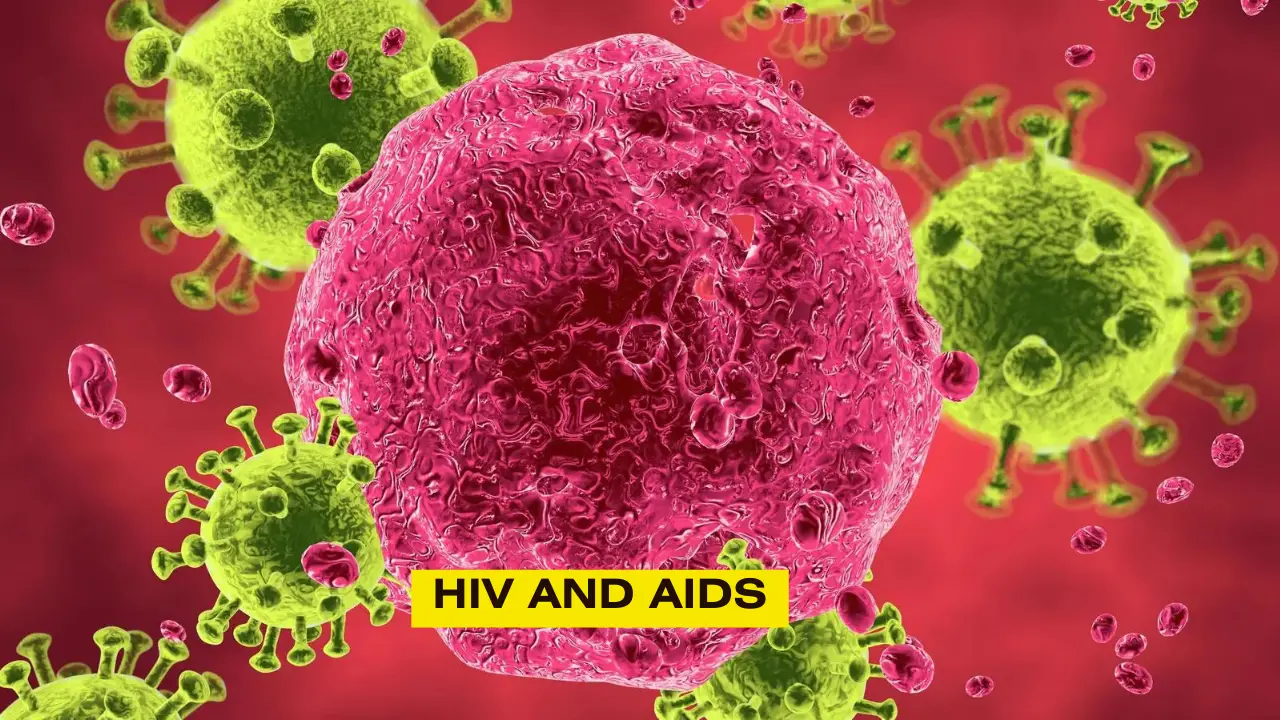Human Immunodeficiency Virus (HIV) and Acquired Immunodeficiency Syndrome (AIDS) are critical public health issues globally. HIV is a virus that attacks the body’s immune system, specifically the CD4 cells (T cells), which help the immune system fight off infections. If left untreated, HIV reduces the number of T cells, making the body more susceptible to infections and certain cancers. AIDS is the final stage of HIV infection, characterized by a severely damaged immune system. Understanding the intricacies of HIV and AIDS is essential for prevention, treatment, and support.
What is HIV?
HIV is a retrovirus that targets the immune system, weakening the body’s defense against infections and diseases. The virus is primarily transmitted through:
- Unprotected sexual contact
- Sharing needles or syringes
- From mother to child during pregnancy, childbirth, or breastfeeding
- Blood transfusions or organ transplants from infected donors
Once HIV enters the body, it integrates itself into the host’s DNA, replicating and spreading throughout the body. The progression from HIV to AIDS can take several years if untreated.
Stages of HIV Infection
1. Acute HIV Infection:
This initial stage occurs within 2-4 weeks after HIV infection. Individuals may experience flu-like symptoms, including fever, swollen glands, sore throat, rash, muscle and joint aches, and headache. During this phase, the virus is rapidly multiplying, and the infected individual has a high viral load, making them highly contagious.
2. Chronic HIV Infection:
Also known as asymptomatic HIV infection or clinical latency, this stage can last for several years. Although the virus is still active, it reproduces at very low levels. People may not exhibit symptoms or may have only mild ones. With proper antiretroviral therapy (ART), individuals can live in this stage for decades.
3. AIDS:
AIDS is the late stage of HIV infection that occurs when the immune system is badly damaged because of the virus. In the U.S., most people with HIV do not progress to this stage thanks to effective treatment options. At this stage, individuals are vulnerable to opportunistic infections and certain cancers. Without treatment, people with AIDS typically survive about three years.
Symptoms of HIV and AIDS
Early HIV Symptoms:
- Fever
- Chills
- Rash
- Night sweats
- Muscle aches
- Sore throat
- Fatigue
- Swollen lymph nodes
- Mouth ulcers
Symptoms of Chronic HIV:
- Persistent swollen lymph nodes
- Diarrhea
- Weight loss
- Cough
- Shortness of breath
AIDS Symptoms:
- Rapid weight loss
- Recurring fever or profuse night sweats
- Extreme and unexplained tiredness
- Prolonged swelling of the lymph glands in the armpits, groin, or neck
- Diarrhea that lasts for more than a week
- Sores of the mouth, anus, or genitals
- Pneumonia
- Red, brown, pink, or purplish blotches on or under the skin or inside the mouth, nose, or eyelids
- Memory loss, depression, and other neurologic disorders
Diagnosis and Testing for HIV
Early detection of HIV is crucial for managing the virus and preventing progression to AIDS. Testing options include:
- Antibody tests: Detect the presence of antibodies produced in response to HIV.
- Antigen/antibody tests: Can detect both HIV antibodies and antigens.
- Nucleic acid tests (NATs): Look for the actual virus in the blood.
Routine screening is recommended for people with high-risk factors, such as those with multiple sexual partners, people who inject drugs, and pregnant women.
Treatment and Management of HIV
Antiretroviral Therapy (ART):
ART is the cornerstone of HIV treatment. It involves taking a combination of HIV medicines (called an HIV regimen) every day. ART reduces the viral load to undetectable levels, helping to maintain a healthy immune system and preventing transmission to others.
Pre-exposure Prophylaxis (PrEP):
PrEP is a preventive strategy for HIV-negative individuals at high risk of infection. It involves taking HIV medicines to lower the chances of contracting the virus.
Post-exposure Prophylaxis (PEP):
PEP is an emergency treatment taken within 72 hours of potential exposure to HIV. It involves a 28-day course of antiretroviral drugs to prevent the virus from taking hold.
Living with HIV
Maintaining a Healthy Lifestyle:
People living with HIV can lead healthy, fulfilling lives by adhering to ART, maintaining a balanced diet, exercising regularly, avoiding substance abuse, and staying up to date with vaccinations and routine health checks.
Mental Health Support:
Coping with an HIV diagnosis can be challenging. Access to mental health services, support groups, and counseling can help individuals manage stress, anxiety, and depression associated with the condition.
Prevention of HIV
Safe Sexual Practices:
- Use condoms consistently and correctly.
- Limit the number of sexual partners.
- Get tested regularly and know your partner’s HIV status.
Avoiding Needle Sharing:
- Use only sterile needles and syringes.
- Participate in needle exchange programs.
Mother-to-Child Transmission Prevention:
- Pregnant women with HIV should receive ART to reduce the risk of transmitting the virus to their baby.
- Babies born to HIV-positive mothers should receive HIV medicines for 4-6 weeks after birth.
Global Efforts and Research
Advancements in Treatment:
Research continues to improve HIV treatment options, focusing on developing long-acting formulations, vaccines, and potential cures.
Global Initiatives:
Organizations like UNAIDS and the World Health Organization (WHO) work towards the goal of ending the AIDS epidemic by 2030. Efforts include increasing access to HIV testing and treatment, reducing stigma, and promoting education and prevention strategies.
Conclusion
Understanding HIV and AIDS is crucial for prevention, early detection, and effective management. With advancements in treatment and ongoing global efforts, individuals with HIV can lead healthy lives, and the spread of the virus can be significantly reduced. Regular testing, safe practices, and awareness are key to combating this global health issue.
